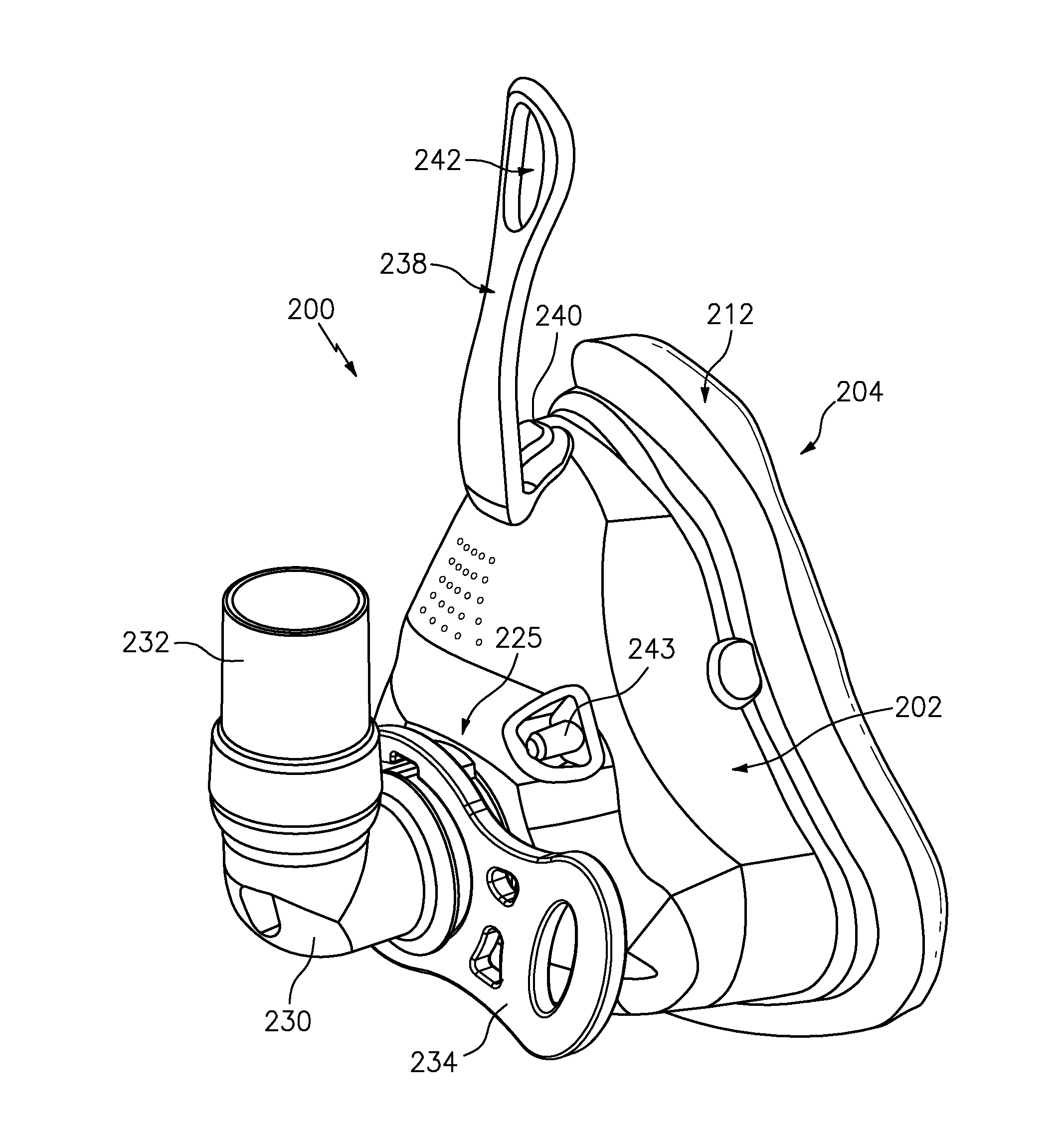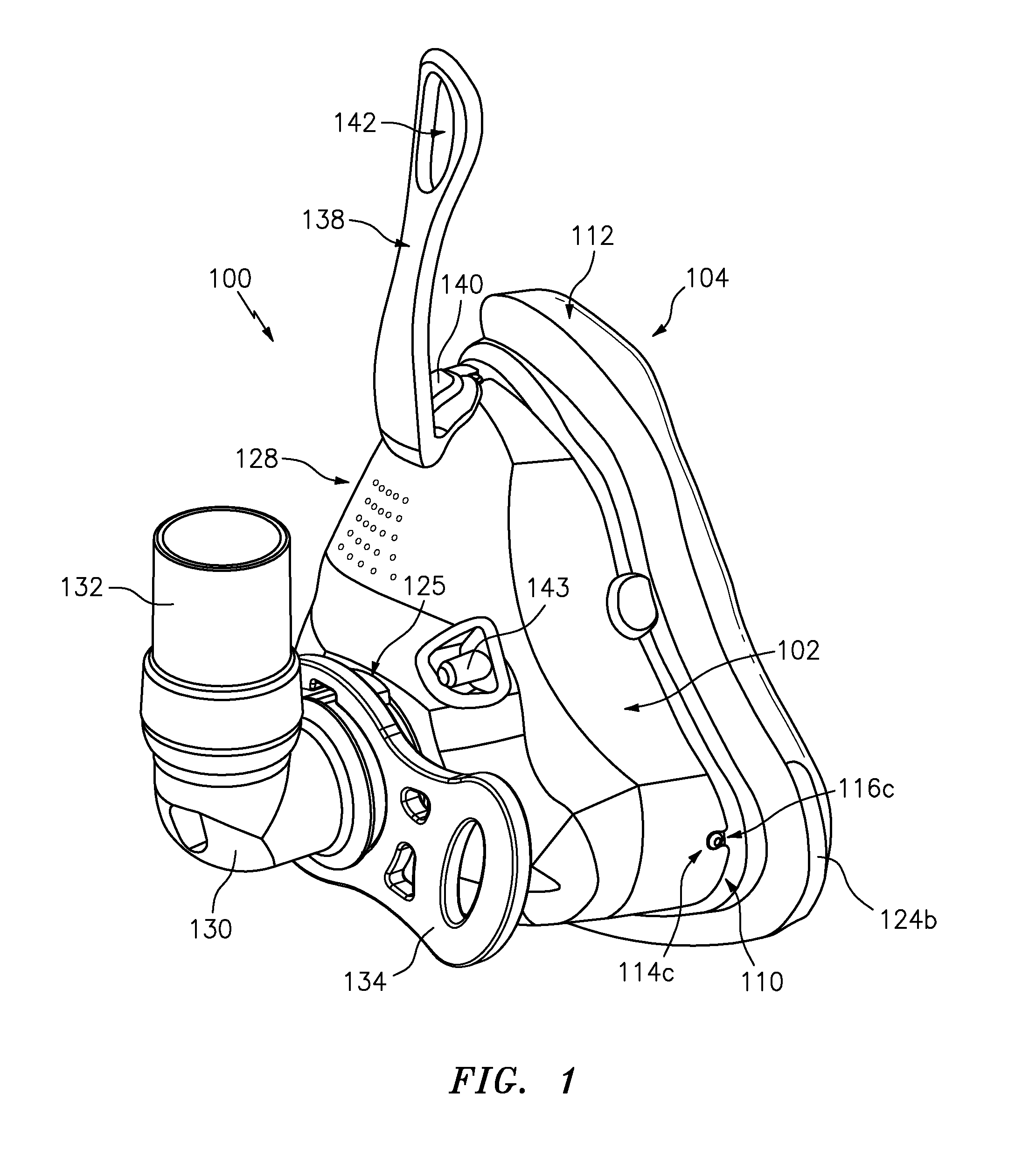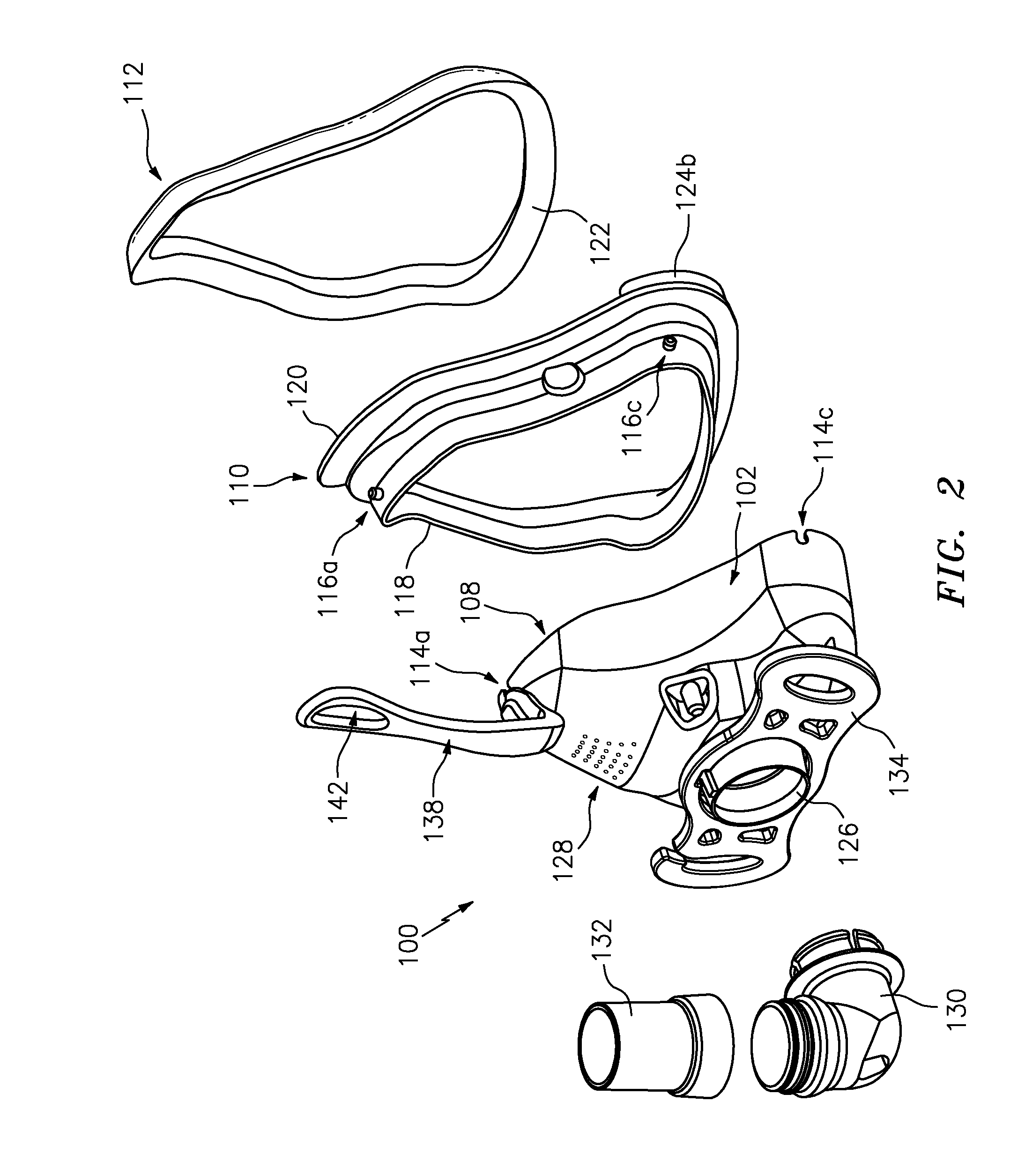Replaceable cushion for respiratory masks
a cushion and mask technology, applied in the field of respiratory masks, can solve the problems of insufficient air reaching the lungs, complex design of replaceable components, and snoring, and achieve the effects of simple attachment or detachment, quick and easy swapping in and out, and effective sealing
- Summary
- Abstract
- Description
- Claims
- Application Information
AI Technical Summary
Benefits of technology
Problems solved by technology
Method used
Image
Examples
embodiment 100
[0043]Referring to FIGS. 1-7, Applicant's full-face mask embodiment 100 comprises: a mask shell 102 of a full-face respiratory mask (e.g., the illustrated CPAP mask) 104; a gasket 106 (see FIG. 3) inside and around an end portion of the shell, adjacent a back 108 of the shell 102; and a cushion frame 110, with an integrally attached face-contacting cushion 112, removably nestled inside shell 102.
[0044]The mask receiving shell 102 also features receiving notches 114a, 114b, 114c spaced around the shell 102 (see, e.g., FIGS. 2-3).
[0045]The preferred cushion frame 110 is shown in FIGS. 2, 4-6. Guide prongs 116a (see FIG. 5), 116b, 116c snap into notches 114a, 114b, 114c to secure the cushion frame 110 (and its permanently attached cushion 112) to the mask shell 102. A rim 118, on a front side of the cushion frame 110, is correspondingly shaped like the inside of shell 102 near back 108. Rim 118 is designed to fit seal against the gasket band 106. The gasket 106 preferably is made of a ...
embodiment 300
[0059]The nasal mask embodiment 300 derives its function from the characteristics of the full-face mask embodiments 100, 200, featuring: a gel cushion 310 affixed (e.g., by glue) onto a rim 312 of the replaceable cushion frame 310; three locating prongs 316a, 316b, 316c) on the cushion frame 310; corresponding locating notches (two shown at 314a, 314c) in the receiving shell 302; and a gasket 306 attached to the rim 312.
[0060]There is a gasket 306 (not shown) encircling and fused to the inside of shell 302; and a cushion frame 310 (see FIG. 13), with an integrally attached cushion 312 inside (see FIG. 14), removably mounted inside shell 302 (see FIG. 14) and against gasket 306.
[0061]As in embodiment 100, guide prongs 316a, 316b, 316c snap into notches 314a, 314b, 314c (both sets spaced around the shell) to secure the cushion frame 310 (and its permanently attached cushion 310) to the mask shell 302. The rim 318 on the cushion frame 310 fits into shell 302, where the rim 318 seals ag...
PUM
 Login to View More
Login to View More Abstract
Description
Claims
Application Information
 Login to View More
Login to View More - R&D
- Intellectual Property
- Life Sciences
- Materials
- Tech Scout
- Unparalleled Data Quality
- Higher Quality Content
- 60% Fewer Hallucinations
Browse by: Latest US Patents, China's latest patents, Technical Efficacy Thesaurus, Application Domain, Technology Topic, Popular Technical Reports.
© 2025 PatSnap. All rights reserved.Legal|Privacy policy|Modern Slavery Act Transparency Statement|Sitemap|About US| Contact US: help@patsnap.com



